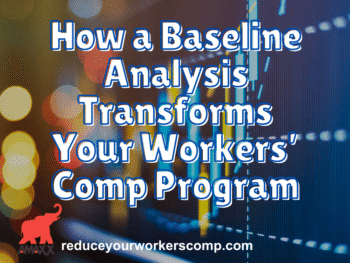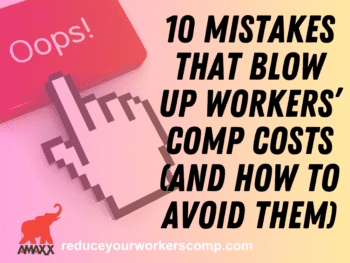Don't Put the Cart before the Horse Any major organizational initiative takes planning. No one starts a major marketing campaign or does a total revamp of an accounting system without assessing the situation first and laying out a plan. So, why is it in the case of workers' compensation companies try to fix what's wrong without identifying the underlying symptoms. Here's the "Cart" An estimated 75% plus companies go at the process backwards, putting the cart before the horse, by starting by reviewing their service providers and vendors rather instead of assessing the key problem areas in their own companies. But before you can choose new vendors, you must know your own program's strengths and weaknesses and measure the effectiveness of existing program elements. Here's the "Horse" Just like a horse powers a buggy, cost drivers power excess workers' comp costs. Your "horse," which has to go first, is analyzing the problem and clearly identifying the cost drivers before trying to find a solution. In other words, you must have a complete understanding of the key cost drivers at your organization. And to expose the cost drivers, you need solid information, not guesses. You need to review your internal workers' compensation management systems, your data, file-handling system and each vendor, such as outside medical service providers, investigators and the insurance company. You need to look at both procedures and implementation. You say you have great procedures? Goody! But, but, are they consistently implemented in a timely manner? For example, delays in referring claims to the insurance company and delays in an employee's return to work may be causes of higher than normal indemnity costs. Delays in referral of cases to a physician reviewer may result in higher medical costs due to unnecessary requests for medical examinations. Consider, too, your organizational structure, such as internal company reporting relationships and duties of managers who are responsible for workers' compensation. Basic information about your company, the industry, number and location of employees, makeup of the work force, and type of work is essential. (workersxzcompxzkit) For example, problems associated with "off-site" employees are different from those associated with employees who are located at a permanent site. Off-site employees such as delivery people, outside salespeople and construction crews, may have little or no supervision, use different transportation modes or be required to carry more tools or materials than employees working in a manufacturing facility. Author: Rebecca Shafer, J.D. consults for mid-market and national accounts focusing on project management, risk management assessments, data review, benchmarking, and development of Workers' Compensation and Injury Management Programs. Projects focus on development of training and education programs, document design, evaluation and integration of insurance claims administration and TPA services. Contact her are: RShaferB@ReduceYourWorkersComp.com WC IQ Test: http://www.workerscompkit.com/intro/ WCBooks: http://www.reduceyourworkerscomp.com/workers-comp-books-manuals.php WC Calculator: www.reduceyourworkerscomp.com/calculator.php Follow Us On Twitter: www.twitter.com/WorkersCompKit
A NEW Article: Return to Work in Unionized Companies Do not use this information without independent verification. All state laws vary. You should consult with your insurance broker or agent about workman's comp issues.














